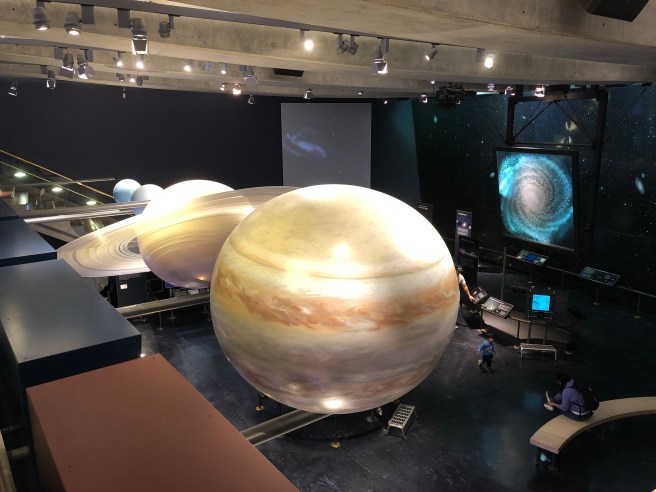A professional conference this year gave me an occasion to visit Los Angeles for the first time. Although I have been to California twice, I never traveled farther south than Big Sur. I arrived in L.A. two days before my conference began to take in a bit of sightseeing. Like Las Vegas and New York, Los Angeles is an iconic city that is closely tied to the uninhibited side of America, where everything is out of the cage and off the pavement. It attracts huge money, which is shamelessly exhibited in fast cars, flashy clothes, ostentatious jewelry, and mansions that could easily command their own zip codes. Usually we associate the “La-La Land” factor of the city with some of the more affluent sections and suburbs: Beverly Hills, Malibu, Santa Monica, Burbank, Hidden Hills, and Bel Air. However, there is more to Los Angeles than glitter and gold.
The afternoon I arrived, I rented a car and made the short drive down to Huntington Beach, the place where Duke Kahanamoku popularized surfing in the 1920s and graced the town with the title “Surf City.” The wind was especially strong while I was there, so walking out to the end of the long pier to circle Ruby’s Surf City Diner was rather brutal. The reward was witnessing first-hand the largest waves I have ever seen — much higher than those on the Florida coast to which I am accustomed. My visit was capped off perfectly with a few cocktails at the Barefoot Bar of Duke’s Huntington Beach Restaurant while I watched the Pacific sun set, a spectacle that never gets old.


Early the next morning, I drove to the hills just north of Los Angeles to check out the Griffith Observatory. Whenever I travel, I am always in search of vantage points that will offer jaw-dropping vistas, which led me to this location. I was not disappointed. In addition to a close-up view of the famous “HOLLYWOOD” sign, the hill-top site provides near-360-degree scenery featuring the nearby green hillsides, the surrounding neighborhoods, and the skyline of the city in the distance. What I didn’t expect was how much I would enjoy the Observatory itself, which serves as a museum of astronomy. From the Fresco painted ceiling above the Foucault Pendulum at the entrance to the wonderful exhibits featuring the sun, other stars, the moon, and planets, the Griffith Observatory is a must-do for anyone who appreciates the mysteries of space. I was particularly impressed to see that a theater in the Observatory is named after the late Leonard Nimoy, the talented actor who portrayed Mr. Spock from the Star Trek television series and movies. He and his wife, actress Susan Bay-Nimoy, made a generous gift for the expansion and renovation of the Observatory. I always liked Nimoy as an actor and an artist, but learning about his philanthropy made me admire him even more.

My next stop was the place that most vividly puts the tinsel in this town. Still recognized by many as the shrine of the entertainment industry, Hollywood covers three and a half square miles of prime commercial real estate in central L.A. Strolling down Hollywood Boulevard is an experience that can be recreated nowhere else in the country. The star-studded Walk of Fame stretches for fifteen blocks and is likely the most dangerous sidewalk in California because most people are looking at the ground the whole time they’re strolling along. Tourists also have near collisions with each other in front of the famous Chinese Theatre, where legends of film and television have literally left their mark with hand and footprints in the large cement blocks in the forecourt. Hollywood & Highland Center is a busy multi-story shopping complex that includes the Dolby Theatre, home of the Academy Awards. Of course, there are plenty of retailers, restaurants, specialty shops, and tourism stands up and down the street. Most impressive to me were the historic facades of the classic old theaters along both sides of the Boulevard — El Capitan, Egyptian, Pantages, and Pacific — they recall the golden age of film from the early to mid-20th century. It is easy to imagine what a glamorous time it must have been. Yes, Hollywood Boulevard would have to be classified as a tourist trap, but how can you visit L.A. for the first time and skip this legendary feature of the city?


My last stop of the day was the Getty Center of the J. Paul Getty Museum. Situated on a 24-acre hill-top campus, the Getty Center is a remarkable combination of art, architecture, and nature overlooking greater metropolitan Los Angeles and Santa Monica Bay. The views of the city and the ocean from the various porticoes, terraces, and gardens are unbelievable. The collection, changing exhibitions, and outdoor art on view at the Getty Center reach across European and American history—from medieval times to the present. I was particularly delighted by the central garden, which boasts more than 500 species. The 134,000-square-foot design features a natural ravine and tree-lined walkway. A stream that winds through a variety of plants gradually descends to a plaza where bougainvillea arbors explode into bloom. I rushed through several of the galleries in the complex of buildings but was only able to get a taste of this astonishing cultural wonder. I hope to return to the Getty again someday to enjoy much more of what it has to offer, and when I do, I am sure there will be plenty of other treasures to explore in “The town of Our Lady of the Angels of Porciúncula” — The City of Angels.


